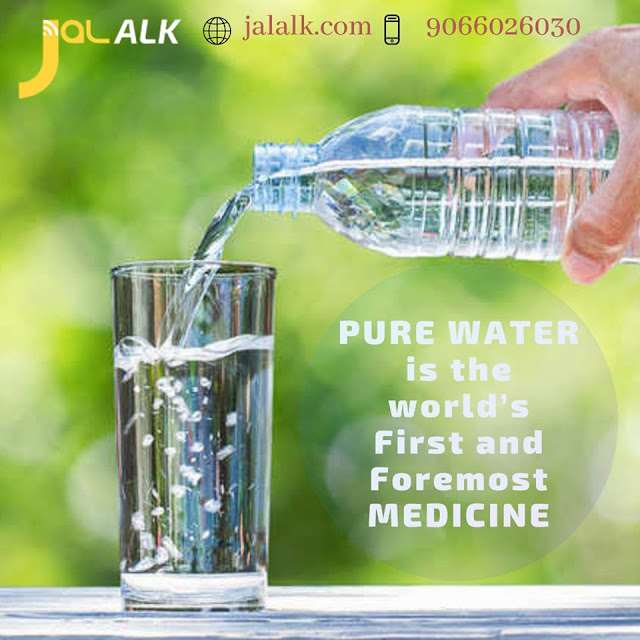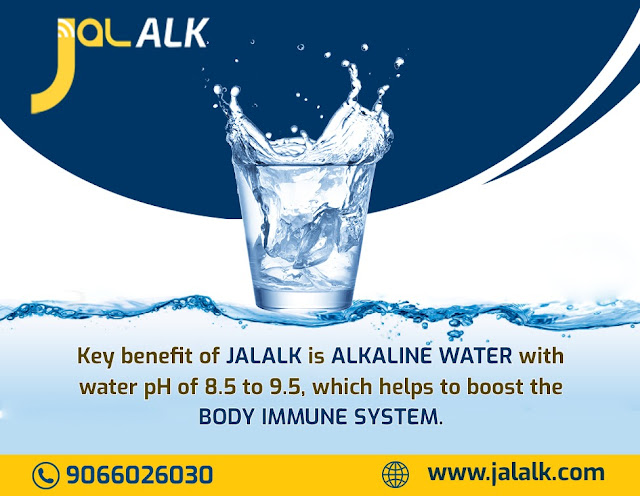Water Metabolism in the Human Body and its Importance.
In this article, we will discuss in detail about the water metabolism in Human Body.
1. Introduction to Water Metabolism in the Human Body
2. Distribution of Water in the Human Body
3. Functions of Water
4. Water Balance
Introduction to Water Metabolism in the human body:
Three factors need to considered for the human body,
- Salts
- Food
From the above three factors, water is the most important and essential factor that needs to be
considered on priority. As per the studies, life is evolved from the aquatic medium and there will be
nothing to replace for water for the existence of life. A human can be without food for weeks but
without water, death takes place in the shortest possible time (in about one week), when only 20% of
the total body weight is lost.
considered on priority. As per the studies, life is evolved from the aquatic medium and there will be
nothing to replace for water for the existence of life. A human can be without food for weeks but
without water, death takes place in the shortest possible time (in about one week), when only 20% of
the total body weight is lost.
Distribution of Water in the Body:
As per the studies, the total water content in the adult body weight is 60% to 70% (45 to 49 litres) and
females adults having somewhat lower values than males. Total water content is 60% to 70% of the
adult body weight, i.e., 45—49 litres, females having somewhat lower values than males. Collected
evidence suggests that using body weight as a parameter of reference; body water content is inversely
related to the overweight of the organism.
females adults having somewhat lower values than males. Total water content is 60% to 70% of the
adult body weight, i.e., 45—49 litres, females having somewhat lower values than males. Collected
evidence suggests that using body weight as a parameter of reference; body water content is inversely
related to the overweight of the organism.
Thus the increase of fatty tissue in the body will automatically result in a reciprocal decrease in total
water content when expressed in terms of per cent body weight.
water content when expressed in terms of per cent body weight.
The total body water is distributed in
Blood - 83%
Brain - 74.5%
Kidneys - 83%
Liver - 86%
Muscles - 76%
Connective Tissue - 60%
Skin - 70%
Fat - 20%
Bones - 22%
Functions of Water in the Human body:
Some of the important physiological functions of water are summarised below:
1. It is an essential constituent of a living cell. No living thing can resist drying.
2. By its solvent action, it forms a great number of crystalloidal and colloidal solutions and thus serves
as a universal medium in which the intracellular and extracellular chemical reactions take place.
Probably no chemical reaction inside the body can take place without water.
as a universal medium in which the intracellular and extracellular chemical reactions take place.
Probably no chemical reaction inside the body can take place without water.
3. It acts as a medium for various physical processes, such as osmosis, diffusion, filtration, etc.
4. It is an important chemical process involved in digestion and metabolism. In this process, the
H and OH ions of water are introduced into bigger molecules and the latter are broken down into
smaller units.
H and OH ions of water are introduced into bigger molecules and the latter are broken down into
smaller units.
5. Dehydration and Condensation, In these processes, the water molecule is removed. This takes place
in certain synthetic processes in which bigger particles are formed by the union of smaller ones. For
instance, glycogen from glucose. This action is the reverse of hydrolysis.
in certain synthetic processes in which bigger particles are formed by the union of smaller ones. For
instance, glycogen from glucose. This action is the reverse of hydrolysis.
6. Ionising Medium, water is a very good ionising medium. The dielectric constant of water is very
high, oppositely charged ions can coexist in water without much interference.
high, oppositely charged ions can coexist in water without much interference.
7. It Acts as a Vehicle for Various Physiological Processes such as,
- For absorption of food material from the intestine;
- For reabsorption from kidney tubules;
- For the transport of the various foodstuffs from place to place;
- For the drainage and excretion of the end products of metabolism;
- For the manufacture of various secretions, such as digestive juices, etc.,
- For carrying the hormones to their places of activity, etc.
The physical and chemical properties of water permit chemical reactions requiring large amounts
of heat to take place at low body temperature.
of heat to take place at low body temperature.
8. Heat Regulation, body temperature is regulated by water in the following ways,
- Heat absorption — Due to high specific heat of water more heat is required to raise the
this property, water can mop up a large quantity of heat.
- Heat conduction and distribution—Heat-conducting power of water is very high it acts as a very
the body.
By the two above properties, water acts as an important part in regulating body heat.
FOR MORE DETAILS:
9. Lubricant Action, water acts as a lubricant to prevent friction and drying. In joints, pleura,
peritoneum, conjunctiva, etc., the aqueous solution is practically free from fats and acts as a lubricant
against rubbing and drying.
peritoneum, conjunctiva, etc., the aqueous solution is practically free from fats and acts as a lubricant
against rubbing and drying.
10. Refractive Medium, the aqueous humour helps to keep up the shape and tension of the eye-ball and
acts as a refractive medium for light.
acts as a refractive medium for light.
11. Mechanical Action, the cerebrospinal fluid which contains nearly 99% water acts as a great
mechanical buffer preventing injury to the nervous system.
mechanical buffer preventing injury to the nervous system.
12. Respiratory Function, Although CO2 and O2 are only slightly soluble in water, yet this little
solubility is of immense importance for the gaseous exchange in the tissues and lungs.
solubility is of immense importance for the gaseous exchange in the tissues and lungs.
Water is continuously being supplied and lost from the body. But still, the total water content of the
body is kept more or less constant, by maintaining a balance between supply and loss. This indicates
that there must be efficient machinery for maintaining water balance.
body is kept more or less constant, by maintaining a balance between supply and loss. This indicates
that there must be efficient machinery for maintaining water balance.
The total water requirement of an adult, under ordinary conditions, is about 2,500-3,000 ml, i.e.,
about 1 ml per calorie of food intake. Half of this quantity (i.e., about 1,500 ml or half ml per calorie)
should be taken as free drinks.
about 1 ml per calorie of food intake. Half of this quantity (i.e., about 1,500 ml or half ml per calorie)
should be taken as free drinks.
Balance Sheet:
- Drinks - 1450 ml
- Solid Food (All solid foods contain some water as free H2O) - 800 ml
- Oxidation - 350 ml
Total supply of water to the body - 2600 ml
- Kidney - 1500 ml
- Skin (visible and invisible perspiration) - 600 ml
- Lungs - 400 ml
- Faeces - 100 ml
Total loss of water in the body - 2600 ml
The above figures are averages and approximate. Water loss by any one of the channels may
rise or fall under various conditions. Loss through skin varies according to the temperature
and humidity of the atmosphere and also upon the amount of muscular exercise done. In hot
climates and with exercise, excretion through the skin may vary from 3—10 litres per day.
Higher atmospheric humidity reduces water loss through the skin. Water excretion, by lungs also
increases in hot dry weather. In diarrhoea, dysentery, cholera, etc., more water is lost in the faeces,
while in conditions of diuresis more is passed out by the kidneys. The water secreted in the digestive
juices is not lost water. Because it is almost completely reabsorbed and about 5—7 litres of water
circulate in this way per day. The loss in saliva and lachrymal secretion is negligible under normal
conditions.
rise or fall under various conditions. Loss through skin varies according to the temperature
and humidity of the atmosphere and also upon the amount of muscular exercise done. In hot
climates and with exercise, excretion through the skin may vary from 3—10 litres per day.
Higher atmospheric humidity reduces water loss through the skin. Water excretion, by lungs also
increases in hot dry weather. In diarrhoea, dysentery, cholera, etc., more water is lost in the faeces,
while in conditions of diuresis more is passed out by the kidneys. The water secreted in the digestive
juices is not lost water. Because it is almost completely reabsorbed and about 5—7 litres of water
circulate in this way per day. The loss in saliva and lachrymal secretion is negligible under normal
conditions.
Conclusion
Conclusion statement for this article about the importance of the water in the human body, it is very
important to take water about 3 to 4 litres per day in the form of liquids and rest in the form of food.
And we need to make sure what type of water we are taking, is it acidic or alkaline, High or Low TDS,
Positive or Negative ORP. For better hydration and better immunity of the body, we suggest taking
Alkaline water with medium TDS and Negative ORP.
important to take water about 3 to 4 litres per day in the form of liquids and rest in the form of food.
And we need to make sure what type of water we are taking, is it acidic or alkaline, High or Low TDS,
Positive or Negative ORP. For better hydration and better immunity of the body, we suggest taking
Alkaline water with medium TDS and Negative ORP.
FOR MORE DETAILS:




Comments
Post a Comment